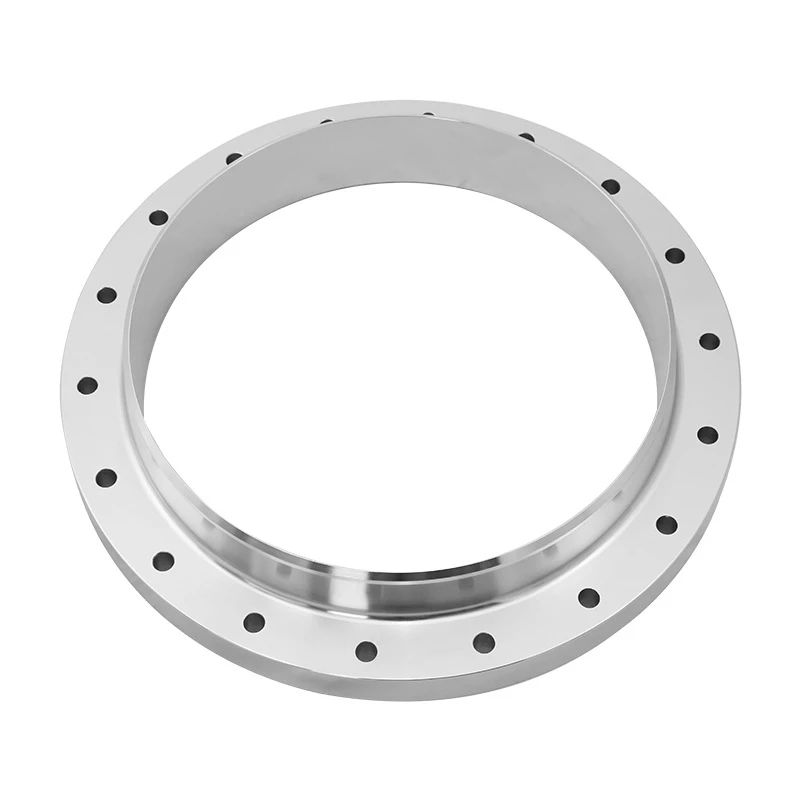Pressure vessel flanges are commonly used components in pressure vessels, serving as fundamental elements that connect various parts of pressure vessels. They are widely employed in industries such as petrochemical, power generation, nuclear energy, and light industry.
For a vessel, a flange should be considered a component comprising the flange itself, a gasket, connecting bolts or studs, and nuts. Its purpose is to assemble different pressure-bearing components together while ensuring a leak-free connection.
The primary failure mode of flange connections is the stiffness failure of the joint, manifested externally as leakage. The media inside pressure vessels often exhibit high temperatures and pressures, along with flammable, explosive, or toxic characteristics. In the event of a leak, serious secondary hazards may occur, posing a significant threat to the integrity of the pressure vessel, surrounding equipment, and the safety of personnel. Therefore, the primary factor to prioritize in the design and selection of vessel flanges is the overall sealing performance.
Sealing forms of pressure vessel flanges:
(1) Forced sealing: This involves pressing the sealing surfaces together through methods such as tightening the connection bolts between the end cover and the flange of the cylinder. Examples include flat gasket sealing and Kammprofile gasket sealing.
(2) Self-tightening sealing: This method utilizes the pressure of the medium inside the vessel to generate a tightening force on the sealing surfaces for effective sealing. The sealing force increases with the rise in medium pressure, maintaining reliable sealing performance even under higher pressures. Examples include combination sealing, O-ring sealing, C-ring sealing, B-ring sealing, wedge sealing, octagonal and elliptical gasket sealing, flat gasket self-tightening sealing, wood sealing, nitrogen-sealed, and others.
(3) Semi-self-tightening sealing: This form combines the pressure of the medium inside the vessel with the tightening force from fasteners to achieve sealing. An example is the double cone sealing.
The working principle of pressure vessel flanges is as follows:
When pre-tightening force is applied to the flange bolts, the bolt force, transmitted through the flange ring, compresses the gasket, forcing the flange gasket to undergo compressive deformation. When the bolt force reaches a certain value, it compels the flange sealing surface and the four uneven surfaces on the gasket to be filled by the deformation of the gasket. This creates the initial sealing conditions to prevent leakage of fluid media.
At this point, the pre-tightening force on the unit effective sealing area of the gasket is referred to as the initial sealing stress ratio of the gasket. When the equipment or pipeline is subjected to medium pressure, the bolts experience tensile stress and elongate. The flange sealing surfaces move in the direction of separation, causing a decrease in the tightening force between the sealing surface and the gasket, and a reduction in the compression of the gasket. Consequently, the pre-tightening stress ratio decreases.
If, at this point, the sealing gasket has sufficient resilience, its deformation can compensate for the separation between the bolt and the sealing surface, maintaining the pre-tightening stress ratio no less than the working stress ratio. In this case, the flange continues to maintain a good sealing condition. On the contrary, if the gasket lacks sufficient resilience, and the stress ratio drops below the working stress ratio, or if gaps reappear at the sealing interface, then the sealing is considered ineffective.
Pressure vessel flanges are classified into different types. For welded flanges used on pressure vessels, there are Type A welding flanges and Type B welding flanges.
Type A Welding Flange:
Directly welded to the vessel.
Smaller or no beveling of the weld seam.
Cannot guarantee simultaneous loading of the flange and vessel.
Strength calculations are based on slip-on flange considerations.
Type B Welding Flange:
Typically equipped with a thicker short cylinder section.
Reliable welding quality between the flange and the short cylinder.
Ensures simultaneous loading of the flange and vessel.
Strength calculations can consider the flange as an integral part.
Widely used in the connection of medium and low-pressure vessels and pipelines.
Advantages and disadvantages:
Type B Flange:
Has a short cylinder section, providing better rigidity than Type A.
Suitable for higher pressure and larger diameter applications.
Type A Flange:
Features a V-shaped bevel, while Type B has a U-shaped bevel, making Type B easier to weld through.
Type B generally has higher strength and stiffness due to its welding characteristics.
Here is the translation of your previous message into English:
Factors affecting the sealing of pressure vessel flanges are as follows:
Bolt Pre-tightening Force:
Appropriate pre-tightening force ensures that the gasket retains a certain sealing stress ratio during operation.
Excessive pre-tightening force may crush or extrude the gasket, leading to seal failure.
Uniform distribution of pre-tightening force can be achieved by increasing the number of bolts, provided there is sufficient space for bolt installation and removal.
Gasket Sealing Performance:
The gasket is a crucial sealing component, and selecting the right gasket material is essential.
The gasket should undergo elastic deformation under proper pre-tightening force without being damaged or extruded.
The gasket material should have sufficient resilience to ensure continuous and tight contact between the gasket surface and the flange sealing surface during operation.
Flange Sealing Surface Characteristics:
The form and surface characteristics of the flange sealing surface play a crucial role in sealing effectiveness.
Situations with stricter requirements may benefit from the use of convex-concave surfaces and tongue-and-groove surfaces.
The flatness of the flange sealing surface, alignment with the flange centerline, and perpendicularity directly impact the uniform loading of the gasket and its proper contact with the flange.
Flange Rigidity:
Inadequate rigidity can result in excessive flange distortion, leading to seal failure.
Increasing flange thickness, expanding flange outer diameter, and other methods can enhance flange rigidity, reduce deformation, and ensure even transmission of bolt force to the gasket.
Operating Conditions:
Operating temperature, pressure, and the chemical and physical properties of the medium affect the reliability of flange connections.
Elevated temperature, increased medium viscosity, and changes in medium properties can increase the tendency for leakage, cause corrosion, dissolution, and stress relaxation in gaskets, flanges, and bolts.

